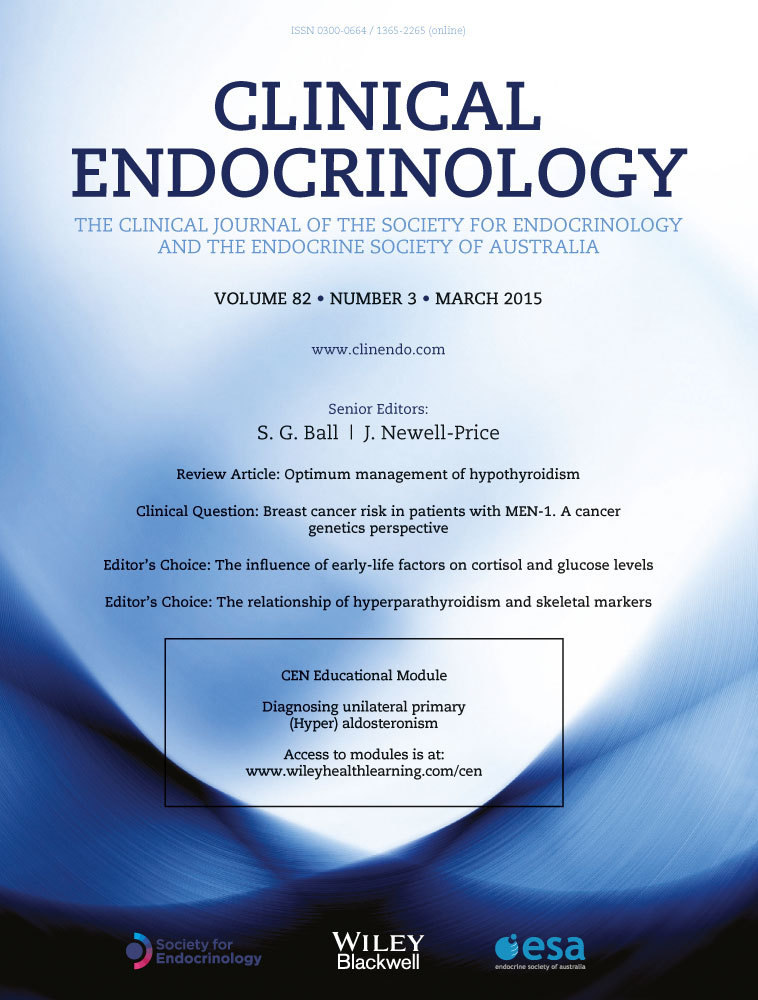Clinical and biochemical consequences of an intragenic growth hormone receptor (GHR) deletion in a large Chinese pedigree
Summary
Objective
Growth hormone insensitivity (GHI) may be caused by failure of GH receptor function. Some patients bearing specific GHR mutations differ from classical GHI individuals by extremely elevated GH-binding protein (GHBP) serum concentrations. We investigated clinical, genetic and biochemical characteristics of a severely growth-retarded Chinese boy with classical Laron syndrome manifestations.
Patients and measurements
DNA and mRNA from blood cells of the patient and 11 family members were investigated for GHR mutations. Basal GH, GHBP, IGF-1 and IGFBP-3 concentrations were determined in serum samples. The impact of the aberrant mRNA on GHR protein expression and secretion was analysed in vitro by transfection studies in HEK293 cells.
Results
The proband and seven relatives had excessively elevated GHBP serum concentration. Basal GH in these individuals was significantly greater compared with family members with normal GHBP. The GHBP increase originated from a novel GHR intragenic deletion comprising parts of exon and intron 8 that caused exon 8 skipping from the GHR mRNA transcript. Transfection studies revealed that the predicted loss of plasma membrane anchorage results in direct secretion of the mutant GHR.
Conclusions
The partial GHR deletion causes excessively elevated GHBP serum concentrations regardless of the state of zygosity of the mutation. The increase in GHBP is associated with significantly elevated basal GH levels. Clinically, only homozygous carriers exhibit classical GHI manifestations. The truncated GHR protein resulting from exon 8 skipping is directly secreted out of the cell.




